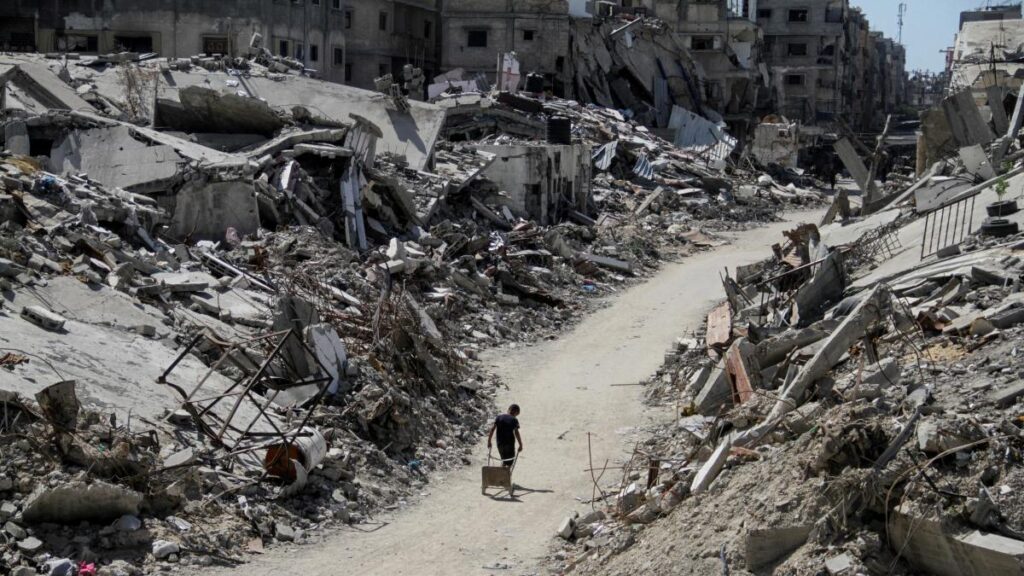The recent Israeli airstrikes in Beit Lahia, northern Gaza, have led to a tragic loss of life, with reports by Hamas-run authorities confirming the deaths of at least 73 individuals, including women and children. The late-night bombings have left many others wounded and trapped beneath the rubble, compounding the humanitarian crisis in the area. Israeli officials, while acknowledging the strikes, have characterized the casualty figures as exaggerated and inconsistent with their own military intelligence. This exchange of narratives reflects the broader complexities and tensions inherent in the ongoing conflict, as each side interprets and presents the situation according to its own agenda.
In addition to the devastation in Gaza, hostilities have flared in southern Lebanon, particularly in Beirut. The Israeli Air Force carried out significant airstrikes targeting what they identified as Hezbollah-related military sites. Smoke billowed over the city following the strikes, which were described as the most intensive in recent weeks. The Israeli Defense Forces (IDF) justified their actions as necessary for dismantling Hezbollah’s military capabilities, advising civilians to evacuate neighborhoods in proximity to these targets. Meanwhile, Hezbollah has maintained an active response, launching rockets into northern Israel, further escalating tensions across the region.
The situation in Gaza has reached a critical humanitarian tipping point, with organizations warning that aid is virtually nonexistent. The United Nations has termed the conditions in northern Gaza as “unspeakable horrors,” highlighting the desperate need for assistance. However, while Israel denies that it is obstructing humanitarian access, reports indicate a dramatic decline in aid deliveries to the enclave since the renewed military offensives began. This ongoing conflict has left many residents without essential supplies, exacerbating the crisis faced by civilians caught in the crossfire.
The military operations in Gaza have intensified since Israel launched a comprehensive assault following the October 7 attacks by Hamas. The death toll has been staggering, with over 42,500 reported fatalities in Gaza since the onset of hostilities. In a military strategy aimed at halting Hamas’s operational capabilities, Israel has concentrated its efforts on densely populated areas, which has inevitably led to civilian casualties and widespread damage to infrastructure. The humanitarian implications continue to mount, casting a shadow of despair over the population as combat operations show no signs of abating.
Amid the continuing violence, the political ramifications of the conflict are significant. The assassination of high-profile Hamas leader Yahya Sinwar was seen by some as a turning point that might foster hopes for peace. However, Hamas’s deputy leader dismissed these hopes, asserting a commitment to resist and suggesting that hostages would not be released until Israel withdraws its forces from Gaza. This indicates a stubborn resolve from Hamas, suggesting that military actions may perpetuate an ongoing cycle of violence rather than resolving the conflict.
Furthermore, the incident involving an alleged assassination attempt on Israeli Prime Minister Netanyahu has compounded the tension. Tensions further escalated as accusations flew back and forth between Iran, Hezbollah, and Israeli leadership. Iran’s support for Hezbollah remains a critical factor in the conflict, as it strengthens the regional opposition to Israel. Iran’s Supreme Leader has emphasized that Hamas remains a resilient force, signaling the complexity of the conflict as regional alliances evolve and the cycle of retaliation shows little sign of resolution. As violence continues unabated, both in Gaza and Lebanon, the prospects for peace remain tenuous at best, underscoring the urgent need for diplomatic efforts to address the ongoing humanitarian and security crises.

